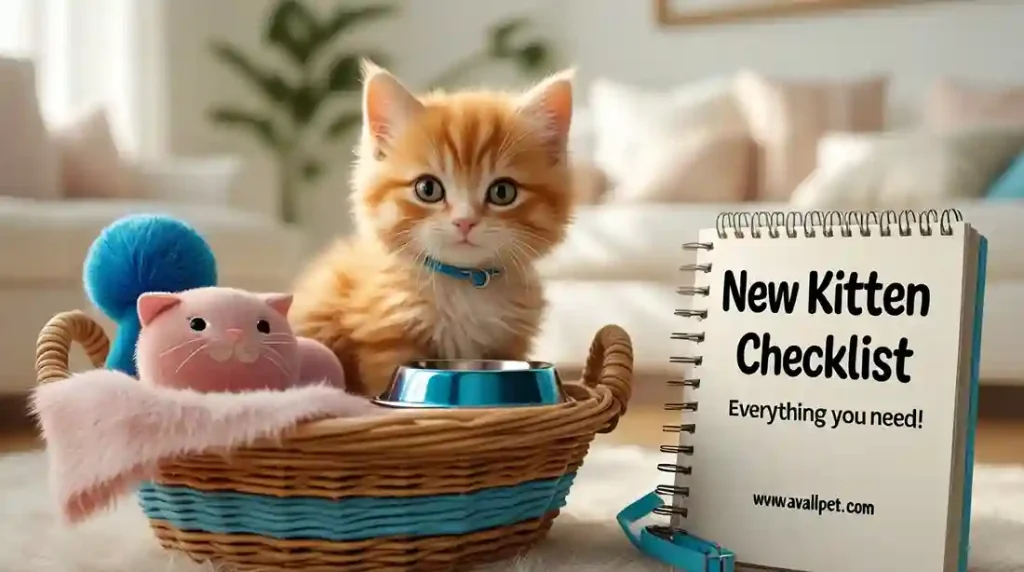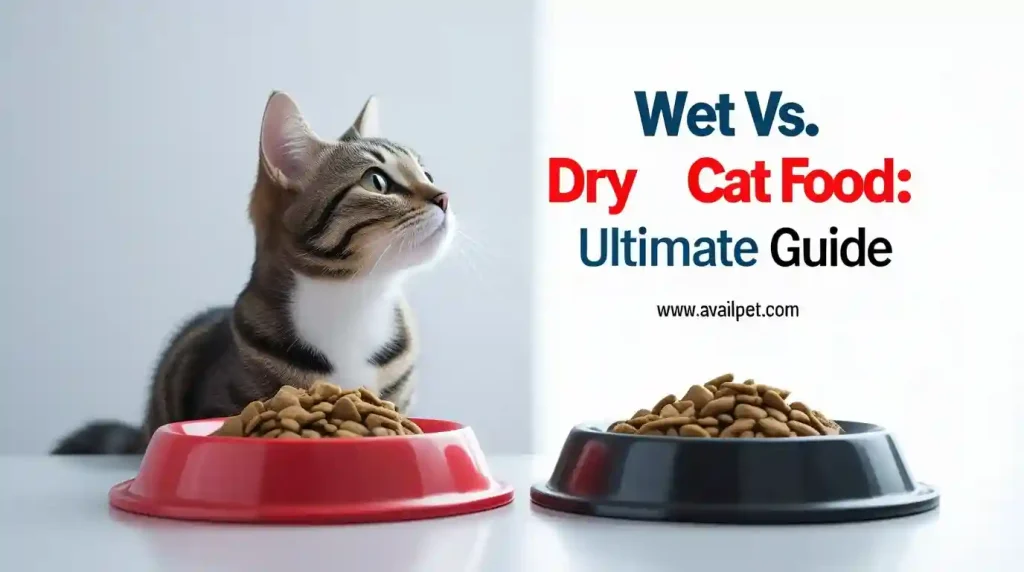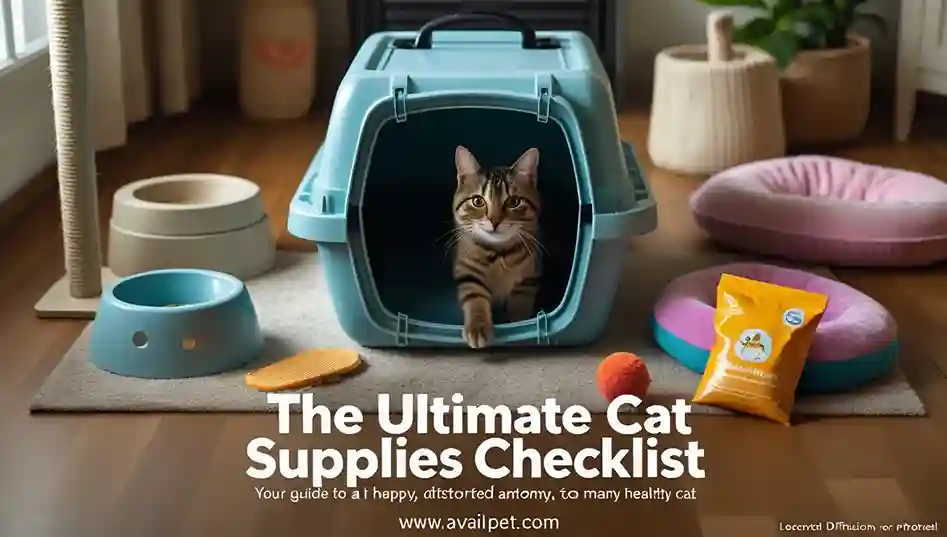Key Takeaways: Cat Litter Guide
- Start with the Clumping Decision: Clumping litter is easier for daily scooping and odor control, while non-clumping is often cheaper and better for kittens who might ingest it.
- Prioritize Your Cat’s Preference: The “best” litter is useless if your cat refuses to use it. Texture and scent are critical factors for acceptance.
- Match Litter to Life Stage: Kittens need safe, ingestible litter, while senior cats need soft, low-dust, and easily accessible litter.
- Odor Control is About Chemistry: Look for litters that neutralize ammonia, not just mask it with perfume.
- Maintenance is Non-Negotiable: No litter can compensate for poor cleaning habits. Scoop daily and change the litter completely on a regular schedule.
Disclaimer: Always consult your veterinarian if your cat shows signs of litter box avoidance, as it can indicate a medical issue.
Walking down the pet supply aisle can feel overwhelming. With countless options claiming to be the best, how do you find the right one? This definitive guide to cat litter is designed to cut through the confusion and simplify your decision.
The wrong choice doesn’t just lead to a stinky home—it can cause your cat to avoid the litter box entirely, creating stress for both of you. Finding the perfect litter isn’t about a single “best” product. It’s about matching the right litter to your cat’s unique needs and your household’s priorities.
Our ultimate cat litter guide breaks down every factor you need to consider—from clumping ability and odor control to dust levels and material safety. Whether you’re a new cat owner or looking to solve a persistent problem, you’ll find the clear, actionable advice you need to make a confident choice.
The Big First Decision: Clumping vs. Non-Clumping
Before you get lost in materials and scents, the most fundamental choice you’ll make is between clumping and non-clumping litter. This single characteristic dictates how you’ll clean the box and manage odors on a daily basis.
In short, clumping litter (typically made from bentonite clay) forms solid clumps when it gets wet, allowing you to scoop out urine and feces easily while leaving the rest of the litter intact. Non-clumping litter (often made from clay, crystals, or natural materials) absorbs moisture without forming clumps, requiring you to change the entire box more frequently.
Your choice here will set the foundation for all other considerations. To help you weigh the pros and cons in detail, from cost and cleanliness to health and environmental impact, we’ve created a dedicated, in-depth comparison.
For a detailed, side-by-side analysis, read our deep dive: Clumping vs. Non-Clumping Cat Litter.
Understanding Cat Litter Materials & Types
Once you’ve considered the clumping factor, the next step is understanding the material itself. The base ingredient of your cat’s litter impacts everything from its environmental footprint and dust level to its texture and odor-fighting capabilities. Here’s a breakdown of the most common types you’ll encounter.
Clay-Based Litters: The Traditional Choice
Clay litters are the most widely available and recognizable option. They are highly effective and come in both clumping and non-clumping varieties.
- Clumping Clay: Made from sodium bentonite, this litter forms hard, scoopable clumps for easy waste removal. It’s a top choice for its excellent odor control and convenience.
- Non-Clumping Clay: Typically made from absorbent clay, this older-style litter is less expensive but requires more frequent full-box changes.
For our top-rated, easy-to-scoop recommendations, see our dedicated guide: Best Clumping Cat Litter.
Natural & Biodegradable Litters: The Eco-Conscious Option
For those seeking a more sustainable or dust-free solution, natural litters are a fantastic alternative. They are typically made from renewable resources and are often compostable.
- Common Materials: Pine, walnut, corn, wheat, and recycled paper.
- Key Benefits: These litters are known for being low-dust, environmentally friendly, and often utilizing natural enzymes to control odor.
- Considerations: They can be more expensive and may have a different texture that some cats need time to accept.
If sustainability is a priority for you, we review the most effective plant-based options in our article: Best Natural Cat Litter.
Key Performance Factors to Consider
Beyond the basic type and material, several key performance factors will determine how well a litter works in your home and whether your cat will accept it. Balancing these factors based on your priorities is the key to finding your perfect match.
Odor Control: Neutralizing vs. Masking
Effective odor control is non-negotiable. However, not all litters tackle smells the same way. Some use powerful perfumes to mask odors, while others use natural ingredients like baking soda, charcoal, or specific enzymes to neutralize ammonia at the source. For a fresh-smelling home, neutralization is almost always more effective than masking.
Discover which litters are champions at eliminating smells, not just covering them up, in our specialized roundup: Cat Litter for Odor Control.
Dust & Tracking: The Invisible Mess
Two of the biggest complaints from cat owners are dust and tracking. Dust can be a major irritant for both cats and humans, especially those with asthma or allergies. Tracking—when litter particles get scattered outside the box—is a constant cleaning battle. Litters made from larger, heavier particles or certain natural materials tend to excel in minimizing both of these issues.
If a cleaner home and better air quality are your goals, explore our top picks for: Low Dust Cat Litter.
Scented vs. Unscented: A Question for Your Cat’s Nose
It’s a common dilemma: should you choose a scented or unscented litter? While a fresh linen or mountain breeze scent might be appealing to you, it can be overwhelming and off-putting for your cat, whose sense of smell is far more sensitive. Unscented litters are generally the safer bet for ensuring your cat’s acceptance and comfort.
Unsure which to choose? We break down the pros, cons, and best use cases in: Scented vs. Unscented Cat Litter.
Choosing Litter for Your Cat’s Life Stage
A kitten, an adult cat, and a senior cat have vastly different needs and vulnerabilities. The perfect litter for one life stage may be unsuitable or even unsafe for another. Prioritizing your cat’s age and physical condition is a crucial step in making the right choice.
Litter for Kittens: Safety First
Kittens are curious, often clumsy, and have developing immune systems. The primary concern with kittens is safety. It is generally recommended to avoid clumping clay litters for very young kittens, as they are more likely to ingest the litter during their explorations, which can lead to dangerous intestinal blockages. Instead, opt for a soft, non-clumping, and dust-free litter, such as a paper-based or certain natural pellet litters.
Ensure a safe and comfortable start for your new companion with our vet-reviewed recommendations for the Best Cat Litter for Kittens.
Litter for Senior Cats: Comfort and Accessibility
As cats age, they may develop arthritis, making it painful to step into a high-sided box or walk on certain textures. They can also become more sensitive to dust due to respiratory issues. For a senior cat, prioritize a soft, fine-textured, and low-dust litter that is easy on their paws and lungs. A litter with low tracking will also be easier on their (and your) mobility.
Find the most comfortable and supportive options for your aging feline friend in our guide to Cat Litter for Senior Cats.
Litter Box Setup & Maintenance
The perfect litter is only half of the equation. A proper setup and consistent maintenance routine are equally critical for your cat’s acceptance and your home’s cleanliness. Neglecting these aspects can undo all the benefits of a well-chosen litter.
The Perfect Litter Box Setup
The right setup makes the litter box an inviting and comfortable place for your cat. Key elements include:
- Size & Number: The box should be 1.5 times the length of your cat. The general rule is one box per cat, plus one extra.
- Placement: Choose a quiet, low-traffic, but easily accessible location. Avoid placing it next to noisy appliances or in cramped corners.
- Type of Box: Some cats prefer the privacy of a covered box, while others feel trapped and prefer an open one. Observe your cat’s behavior.
Getting the fundamentals right is essential. Learn the secrets to a cat-approved environment in our detailed guide: Cat Litter Box Setup.
Litter Maintenance Schedule
A dirty box is the most common reason cats start avoiding their litter. A consistent cleaning routine is non-negotiable.
- Daily: Scoop solid waste and urine clumps at least once, preferably twice.
- Weekly: Do a “litter refresh.” Remove all litter, wash the box with mild, unscented soap and hot water, and refill with fresh litter.
- Completely Change: The timing depends on the litter type, number of cats, and the litter’s effectiveness. For non-clumping litter, this may be every few days.
For a detailed breakdown of how often to perform a deep clean for different litter types, consult our resource: How Often to Change Cat Litter.
Troubleshooting: When Your Cat Avoids the Litter Box
Finding urine or feces outside the litter box is frustrating and concerning. This behavior, known as house soiling, is a clear signal that something is wrong. It’s crucial to understand that cats do not do this out of spite; there is always an underlying reason, which typically falls into two categories: medical or behavioral.
Common Reasons and Solutions
- Medical Issues: This is the first possibility to rule out. Urinary tract infections, bladder stones, kidney disease, arthritis, and other conditions can cause pain or increased urgency that leads to accidents.
- Litter Box Aversion: The cat has developed a negative association with the box itself. Common causes include:
- A dirty litter box.
- A litter scent, texture, or depth they dislike.
- A box that is too small, too covered, or in a frightening location.
- Stress or Anxiety: Changes in the household, conflict with other pets, or outdoor stressors can trigger marking or avoidance.
The first and most critical step is always a visit to the veterinarian to rule out medical problems. Once health is confirmed, you can systematically address the behavioral and environmental factors.
If you’re facing this challenge, don’t despair. Our step-by-step guide will help you diagnose the cause and find a solution: Cat Not Using Litter Box.
FAQs about Cat Litter Guide
How much cat litter should I put in the box?
For most litters, a depth of 2-3 inches is ideal. This provides enough material for your cat to dig and cover waste effectively, without being so deep that it’s difficult to walk in. Using too little litter can reduce odor control and discourage use, while too much is wasteful and can lead to excessive tracking.
Is crystal litter better than clumping clay?
It depends on your priorities. Silica gel crystal litter is excellent for odor control and low dust, and it lasts a long time. However, it doesn’t clump, so you only scoop solid waste. Clumping clay is typically better at liquid odor control if scooped daily and is more familiar to most cats. Crystals are often preferred for their low maintenance and dust-free properties, while clumping clay is favored for its immediate liquid removal.
Can I flush cat litter down the toilet?
We do not recommend flushing any cat litter. Even products labeled “flushable” can cause serious plumbing blockages and damage septic systems. Furthermore, cat feces can contain parasites like Toxoplasma gondii which are not always killed by water treatment plants and can harm marine life. Always bag used litter and dispose of it in the trash.
Why is my cat kicking all the litter out of the box?
Some litter kicking is normal burying behavior. However, excessive kicking often means the litter box is too small or has low sides, giving your cat inadequate room to dig without making a mess. Try switching to a larger box with higher walls or a top-entry litter box, which contains litter much more effectively.
Conclusion: Finding Your Perfect Match
Choosing the right cat litter is a personal decision that balances your cat’s preferences with your household’s practical needs. There is no single “best” litter for every cat and every home. The perfect choice is the one that your cat uses consistently and that makes maintenance manageable for you.
Remember the key principles from this cat litter guide:
- Start with the fundamental choice between clumping and non-clumping litter.
- Consider the material—be it clay, natural, or silica—based on your priorities for dust, tracking, and sustainability.
- Prioritize performance factors like odor control that neutralizes smells rather than just masking them.
- Always factor in your cat’s life stage, ensuring their safety and comfort.
- A proper setup and maintenance routine is just as important as the litter itself.
We’ve provided links to in-depth articles on each of these specific topics to help you dive deeper. The journey to the perfect litter may require some patience and experimentation, but by understanding these core concepts, you are well-equipped to make an informed choice. Here’s to a happy cat and a fresh-smelling home
Sources
- American Association of Feline Practitioners: Environmental Needs Guidelines
- Cornell Feline Health Center: Litter Box Problem Behavior
- Journal of Feline Medicine and Surgery: Substrate Preferences in Cats
- International Cat Care: Litter and Litter Tray Guide
Disclaimer: The information in this guide is for educational purposes. Always consult your veterinarian for specific health concerns, especially regarding litter box avoidance. We may earn from qualifying purchases through affiliate links.






